
What do Hungarian businesses use artificial intelligence for?
Artificial intelligence (AI), no longer just a part of the sci-fi world, has become a reality and an integral part of our daily lives, especially in the business sector. In Hungary, more and more businesses are discovering the opportunities offered by AI, particularly because it can save time and energy.
According to a recent study by Billingo involving over 1000 businesses, the main goals of AI usage include information gathering, translation, data analysis, as well as supporting advertising and marketing activities. AI already provides a significant advantage in these sectors. For example, 66% of businesses use AI for information searching, 58% for translation, and 34% for data analysis. Common areas of AI application also include the creation of visual and graphic content, which 27% of respondents already use.
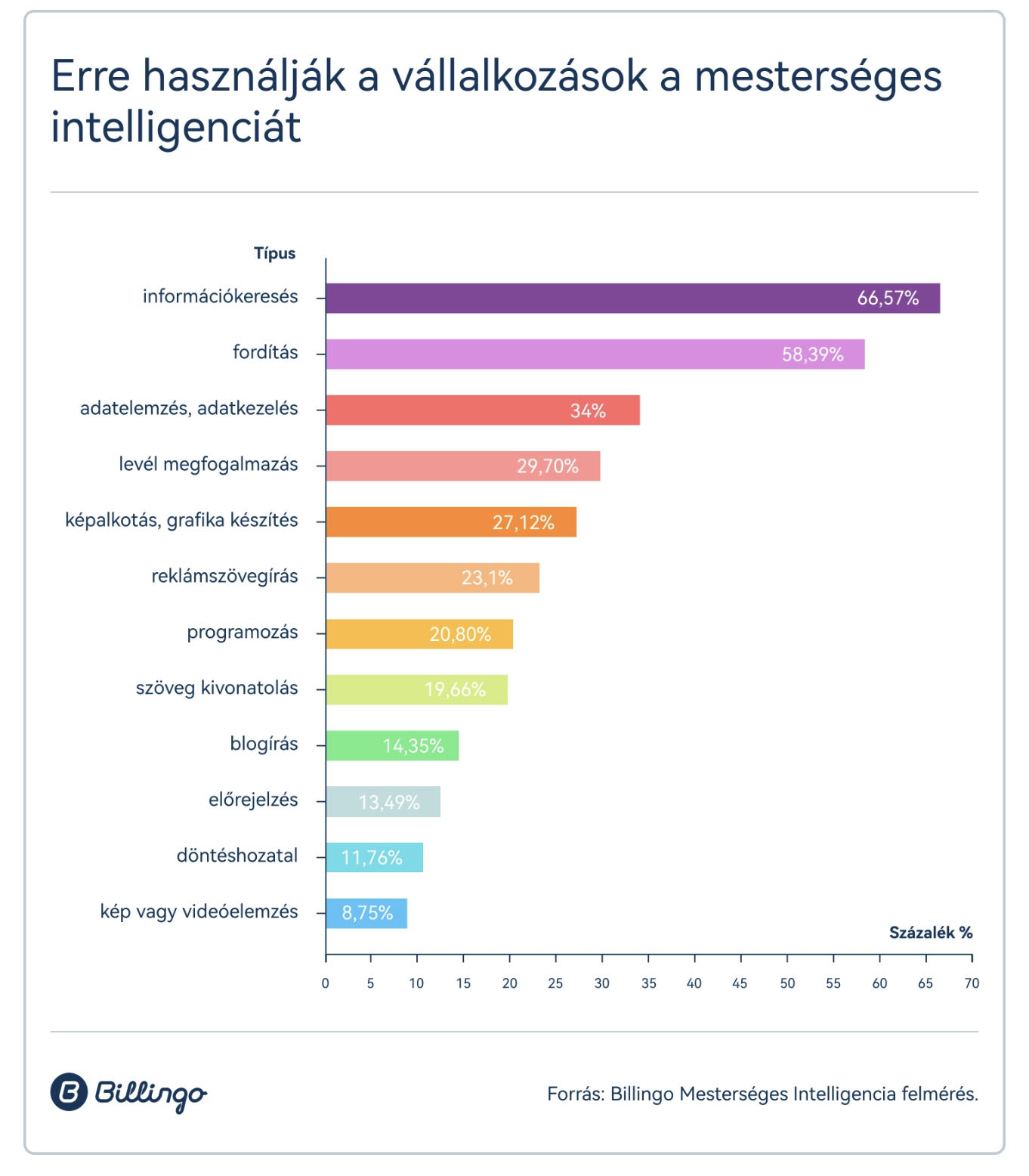
Source: billingo.hu
Hungarian businesses have thus started to integrate AI into their daily workflows, although they also have reservations about the new technology. Many are concerned about AI's transparency and controllability and fear it could be a tool for fake news or social manipulation. Despite these concerns, many entrepreneurs see opportunities in AI for automating administration, marketing, and customer service, with more industries discovering how useful AI can be for increasing efficiency and reducing costs.
What is prompt engineering?
To use artificial intelligence effectively, the method of "prompt engineering" is becoming increasingly important. But what exactly is prompt engineering? Imagine the AI as a super intelligent assistant that will only respond correctly if we ask it the right questions. Prompt engineering teaches us exactly this: how to give AI precise, clear instructions.
The essence of prompt engineering is learning what questions to ask the AI to receive the most relevant answers. Prompts should be clear and detailed, as the AI "interprets" our request based on the given prompt. For instance, a brief command might not yield an entirely satisfactory response, whereas a well-formulated, precise prompt can result in much more accurate outcomes.
Prompt engineering not only helps improve the quality of responses but also makes workflows more efficient, as AI can respond quickly and accurately. Therefore, more and more companies are seeking professionals skilled in crafting prompts for better results.
Anatomy of a prompt
To better understand what prompt engineering is, let's see how a good prompt is structured. Consider a simple example: we want to create a social media post about the launch of a new product.
A general prompt might sound like this:
“Create a social media post about the launch of a new product.” In this case, AI would likely generate a basic post but may not include elements that are important to us.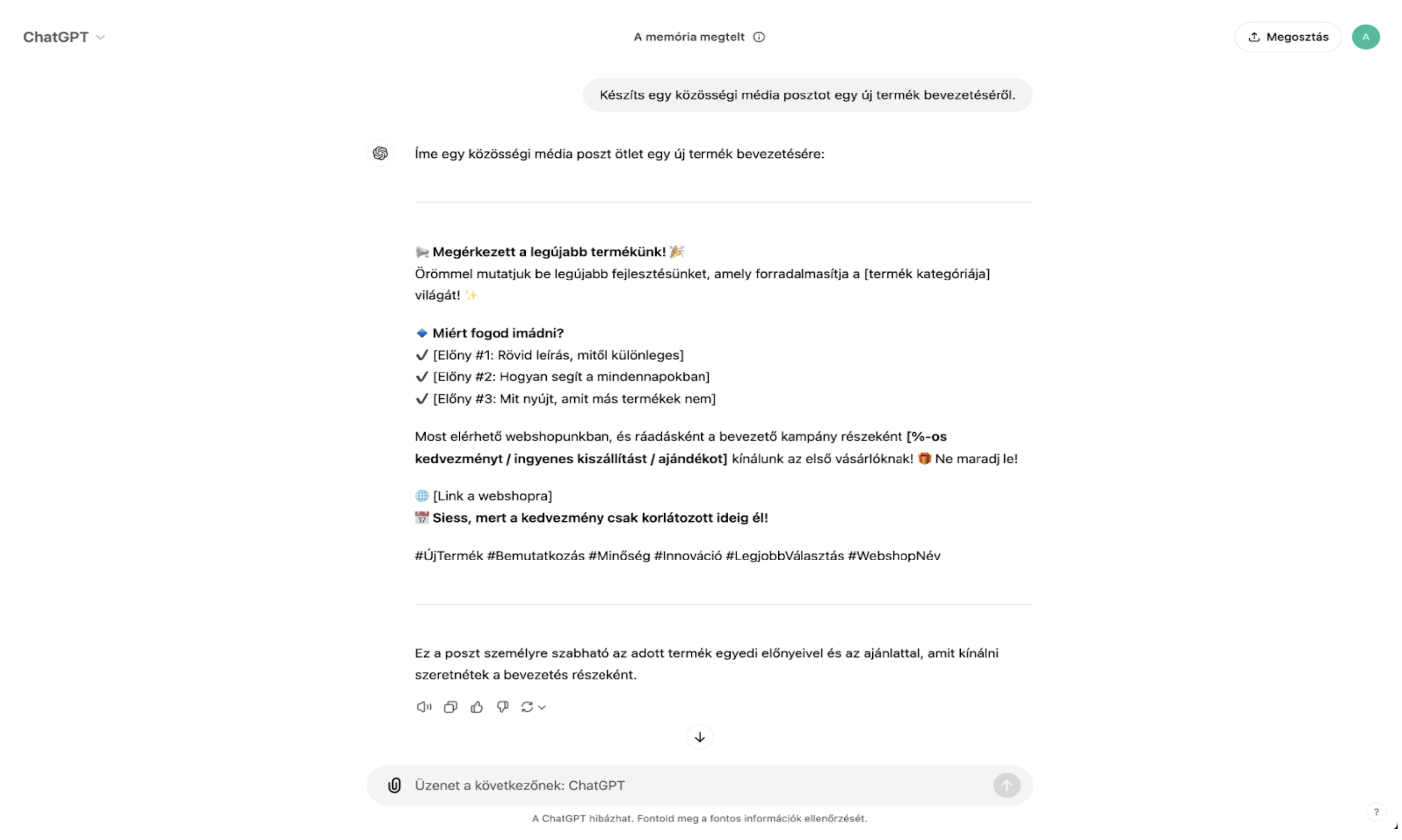
A better prompt would look like this:
“You are an experienced social media manager. Please create a 4-6 sentence enthusiastic, friendly (but not pushy) social media post about the launch of [product name], highlighting its main benefits, such as [benefit 1], [benefit 2], and encourage followers to click on the [link] page. Build the post as follows: Include an introductory part in 2-3 sentences followed by bullet points detailing the different benefits, and at the end of the post, include a CTA with the previously provided link. Enrich the text with emojis that express its message.”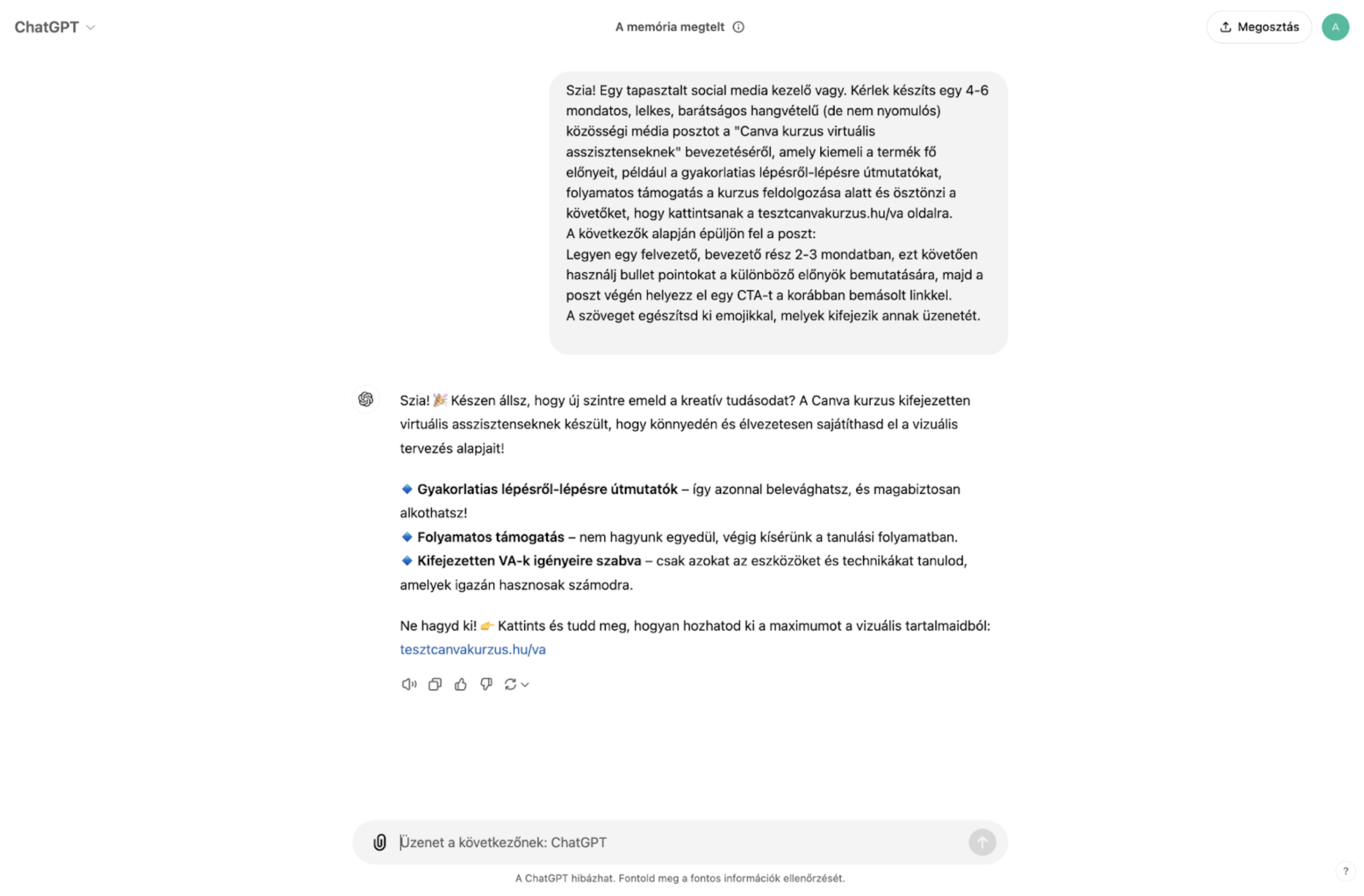
In this case, the AI provided a much more relevant and useful response since we specified how to craft the post in terms of style, length, and content. Could it be made even more precise? Of course! The essence is clear: the more information and instructions you give, the more detailed and perfect the outcome will be.
The types of prompts can also vary based on what you aim to achieve. Shorter prompts might suffice for quick information gathering, but more complex tasks like composing an entire advertising campaign require more detailed prompts. It’s worth learning and practicing how to formulate prompts to make the most of AI's capabilities.
Now let's look at some concrete examples of prompt types. As examples, we'll present a few simpler structured commands.
- (Role - Task - Format) - This rule helps structure the prompt by defining the role, task, and format.
“Act as a social media expert (Role). Create a detailed content marketing strategy with content pillars (Task) in a 5-6 point list, providing 2-3 sentence explanations for each point (Format).”
- (Context - Action - Result - Example) The AI can create more targeted content by describing the context, the required action, the expected result, and providing an example.
“Launching a new product for a B2B software company (Context). Develop a comprehensive content marketing campaign plan (Action) to raise product awareness and generate at least 100 quality leads (Result). For example, similar campaigns have successfully used professional webinars, detailed case studies, and targeted LinkedIn ads (Example).”
+Tip: Try these commands to see how they perform for you.
Additionally, many more complex prompts exist, but if you are new to artificial intelligence, these are more than sufficient for starting points and practice.
Prompt engineering is essentially "training" for AI—when properly taught, AI can become a highly useful tool that saves both time and energy.
The best AI solutions for entrepreneurs for content creation
Content creation plays an increasingly vital role in business growth and strengthening online presence. The explosive development of AI technologies offers the possibility of making content production faster, more efficient, and easier. Below, we explore how these AI-based solutions can help in areas like blogging, social media posts, advertising, image generation, and video creation. Let's examine their benefits and potential drawbacks, and what to pay attention to!
- Writing and Editing Blog Posts
AI can support the entire process of writing blog posts, from ideation to finalizing the text. Tools such as ChatGPT, Jasper, or Claude generate texts quickly, provide ideas, and optimize content for relevant keywords. AI not only saves time but also helps improve content quality by analyzing and integrating data during writing. However, it’s worth reviewing or further refining the finished texts to make them as natural as possible with a human touch.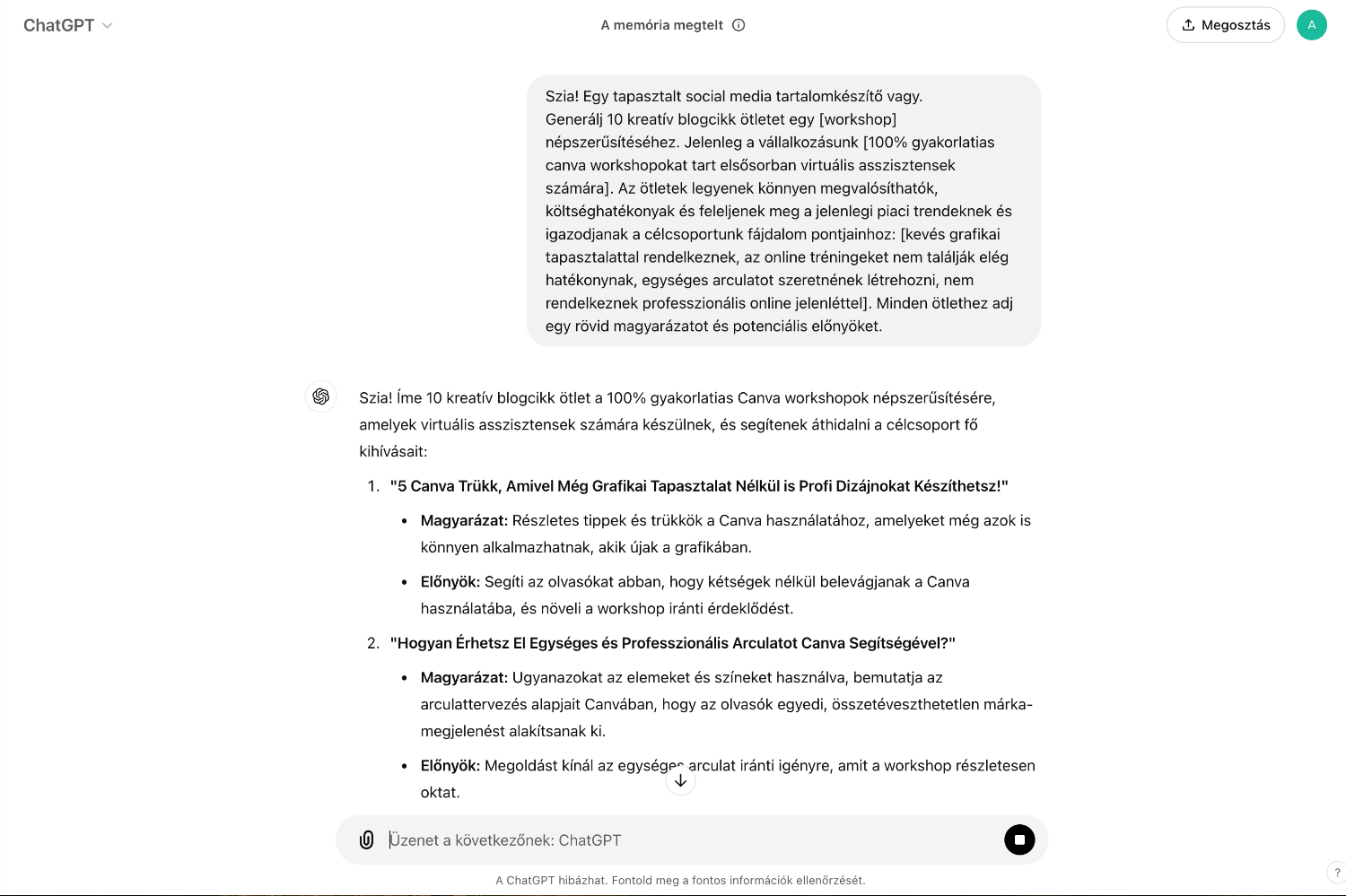
- Creating Social Media Posts
AI-based tools like Lately and Buffer use AI to suggest post ideas and tailor messages to the audience. Some tools can offer multiple variations for A/B testing. Their advantage lies in consistently providing fresh ideas quickly. The downside is that automated texts can sometimes be too generic, so fine-tuning is advisable.
- Writing and Optimizing Ads
For advertising, tools like AdCreative or Copy.ai can be used, which create personalized texts and designs based on audience analysis. These tools automatically analyze previous ads and generate new ideas. However, it is important to ensure that AI-generated ads effectively target their intended audience and are not overly general.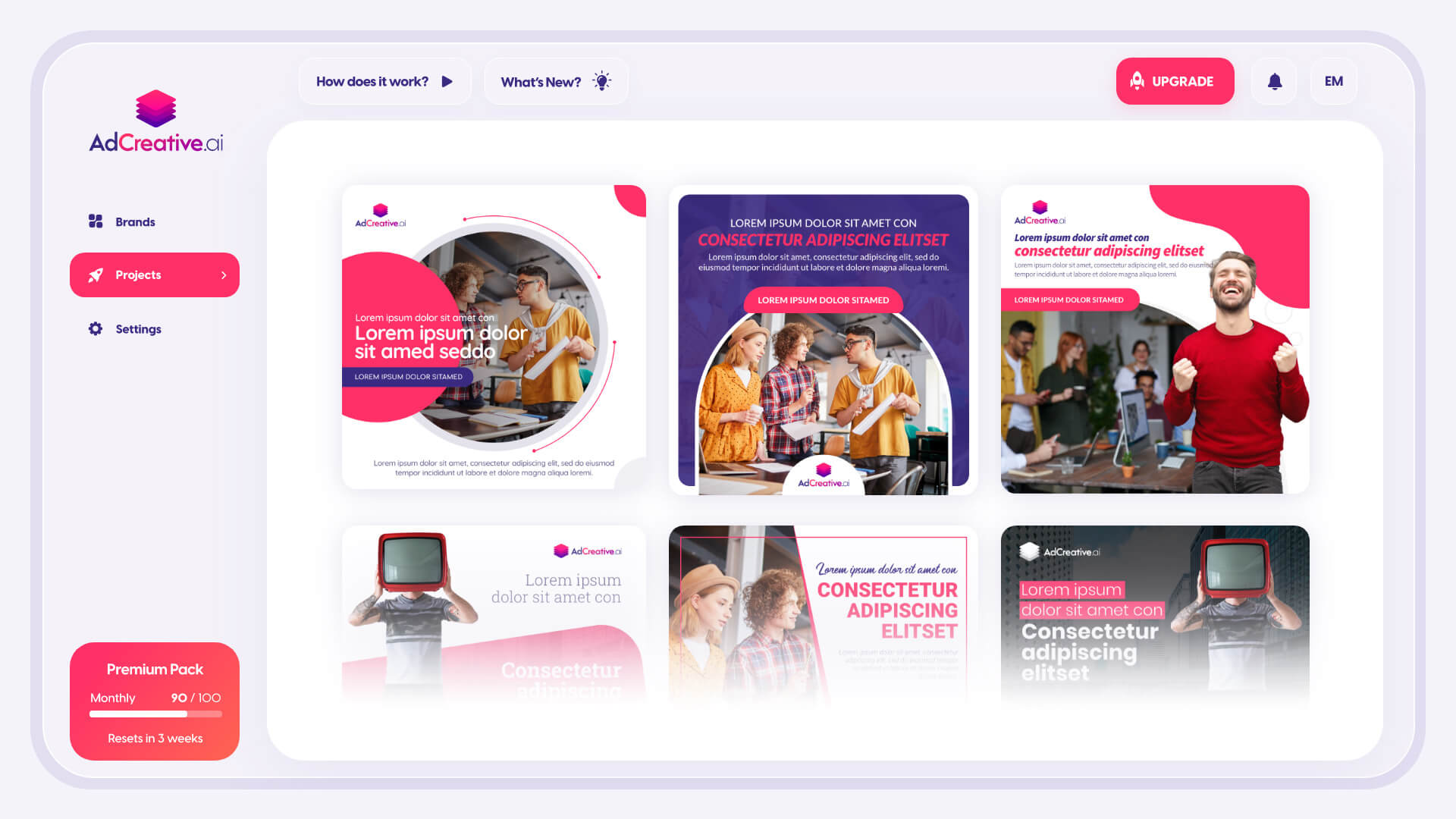
- Image Generation and Video Making
Creating creative materials is often time-consuming, but AI can offer support here as well. DALL-E and Midjourney generate impressive graphics and images, while Fireflies, Descript, and Veed.io assist in effortlessly editing video content. Veed.io offers features like automatic captioning, background noise reduction, and object removal, ensuring that the final product is created quickly and seamlessly.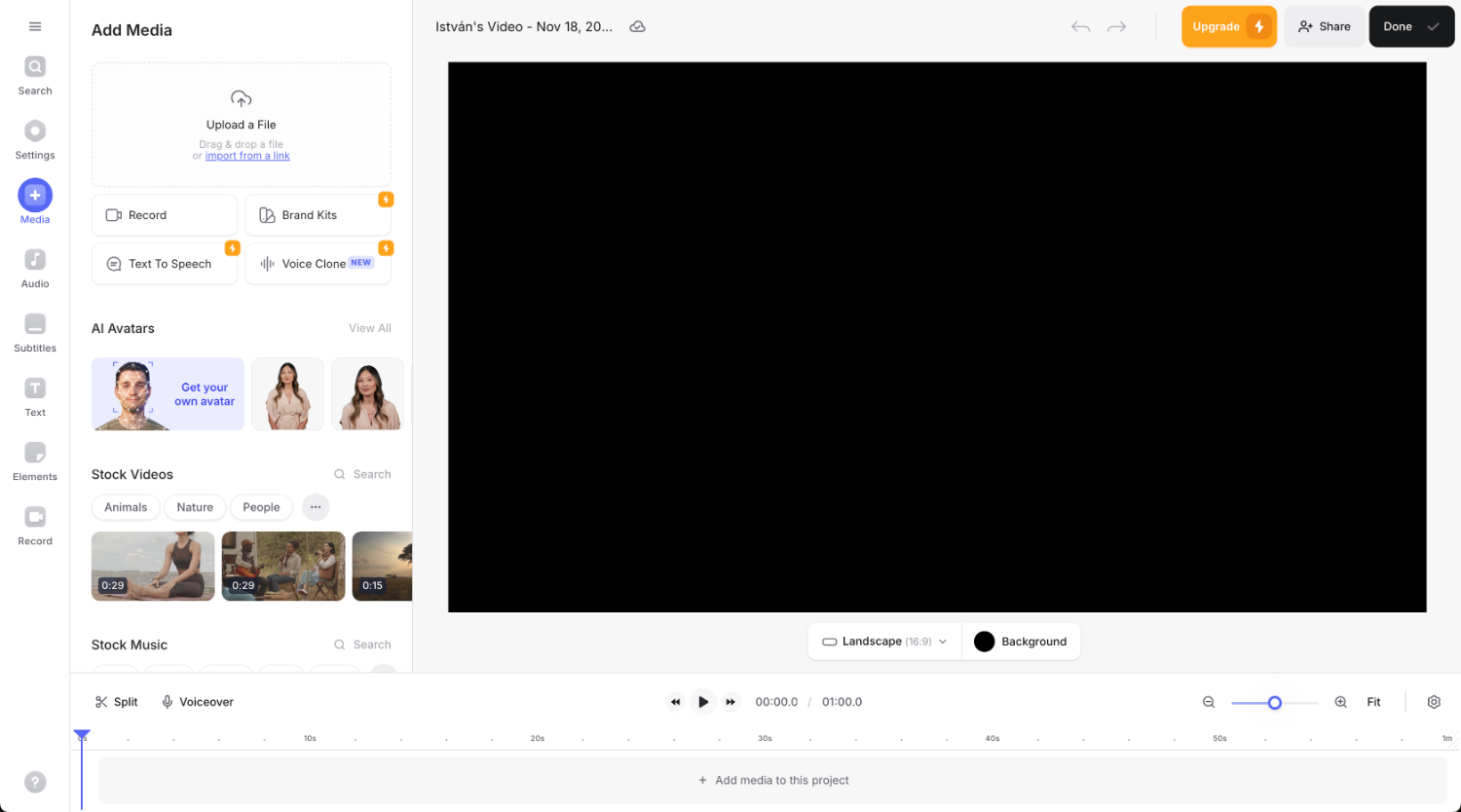
Let's look at a step-by-step example!
A well-written prompt for creating a social media post is structured and detailed, considering all important elements. Below are the precise steps that help in crafting a detailed prompt.
1. Define the goal
- What is the post's purpose?
For example: introducing a new product, promoting a service, engaging the audience, advertising promotions. - What action do you want to encourage the audience to take?
: buying, subscribing, commenting, sharing, registering for an event, etc.
2. Target audience
- Who are the targeted followers of the post?
They can be young people, families, entrepreneurs, students, etc. - What is the tone of the target audience?
friendly, formal, youthful, professional.
3. Theme and content
- What is the main theme?
The theme could be a specific product, service, event, promotion, or an interesting topic people can relate to. - Important message or value:
What’s the key message you want to convey? For example: product quality, promotion duration, service benefits. - Usable keywords:
If SEO considerations are in play, choose keywords related to the topic.
4. Format and tools
- Text:
How long should the post be? Is a longer text needed or just an eye-catching short message? - Image, video, or other visual content:
If using an image or video, what should be featured? How does the visual content reinforce the text? - Hashtags and mentions:
Choose relevant hashtags, mention brands, locations, influencers if applicable.
5. Style and tone
- Tone and voice:
Friendly, professional, humorous, emotional? Always adjust the tone to the target audience and brand style. - Call to Action (CTA):
What call-to-action do you want to place at the end of the post? For example: "Don't miss out!" "Buy now!" "Learn more here!"
6. Supplementary information
- Is there any special offer you want to highlight?
Promotions, coupon codes, discounts, etc. - Imagine the post achieves its intended goal. What is the next step?
This can help ensure the post includes the appropriate call-to-action message.

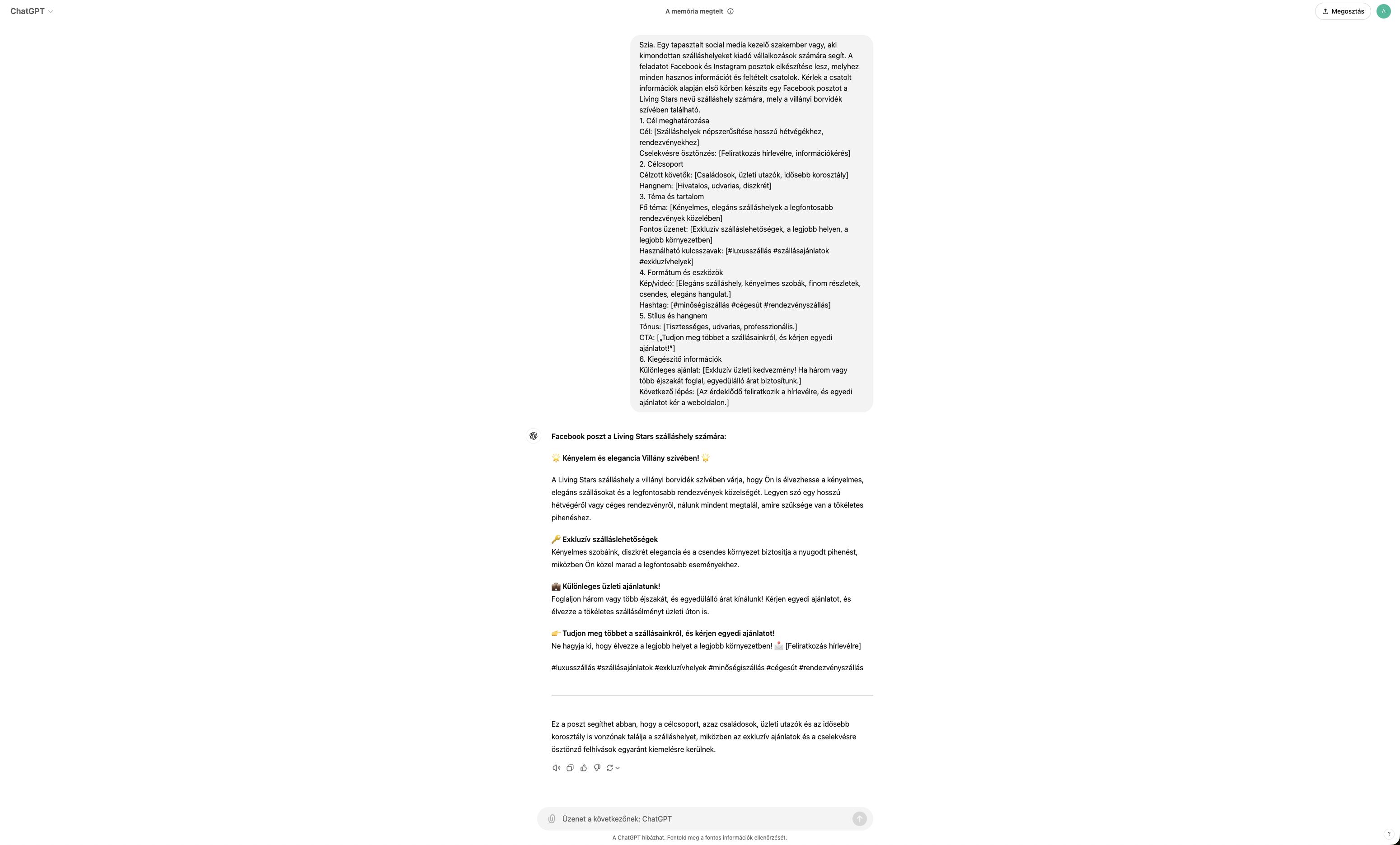
How can you reduce administrative burdens with AI?
Administrative tasks are often time-consuming and monotonous, but fortunately, AI technologies can significantly reduce these burdens as well. AI is not only bringing revolutionary changes in content creation but also in performing administrative tasks. Below, we demonstrate how AI-based tools can help in data analysis, customer service, email responses, implementing chatbots, and translations.
- Data Analysis
AI data analysis tools, such as Tableau, can quickly and efficiently process large volumes of data and present them in a visually interpretable form. Thus, you don’t have to spend hours manually processing data. It can aid in identifying trends, discovering anomalies, and enables data-driven decision making.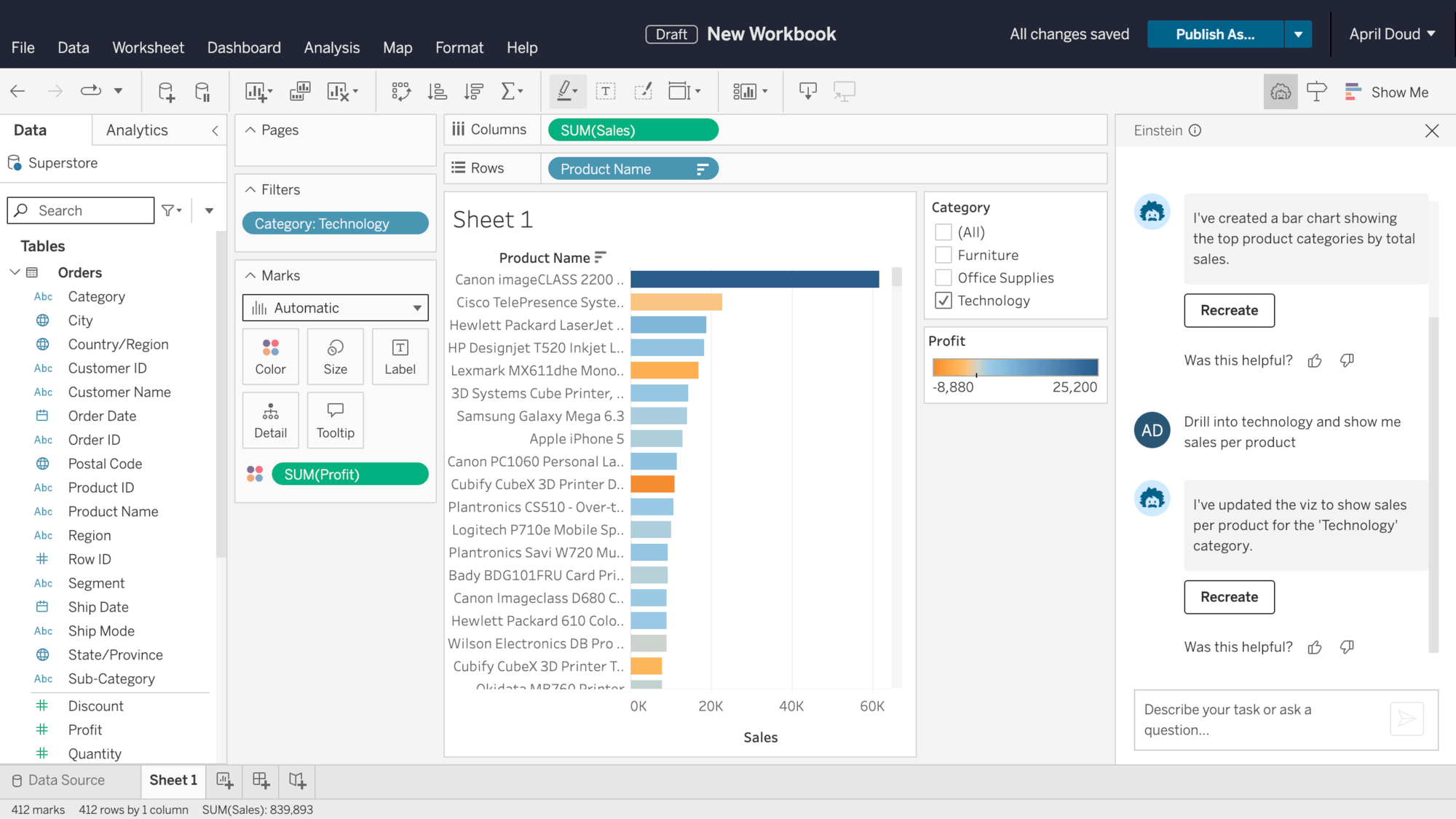
- Customer Service: Responding to Emails
AI-based tools can provide substantial support in the field of customer service. Automated systems like Zendesk or Freshdesk can automatically categorize emails and generate responses based on received messages. AI with pre-set templates can quickly react and, in certain cases, fully automatically answer questions.
- Chatbots
Chatbots are among the most popular AI-based solutions as they can continuously respond to customer needs without requiring human intervention. Platforms like Tidio, Drift, or ManyChat allow us to easily set up chatbots that assist prospects and answer questions on websites or social media. AI can assist in lead management, customer categorization, and maintaining contact.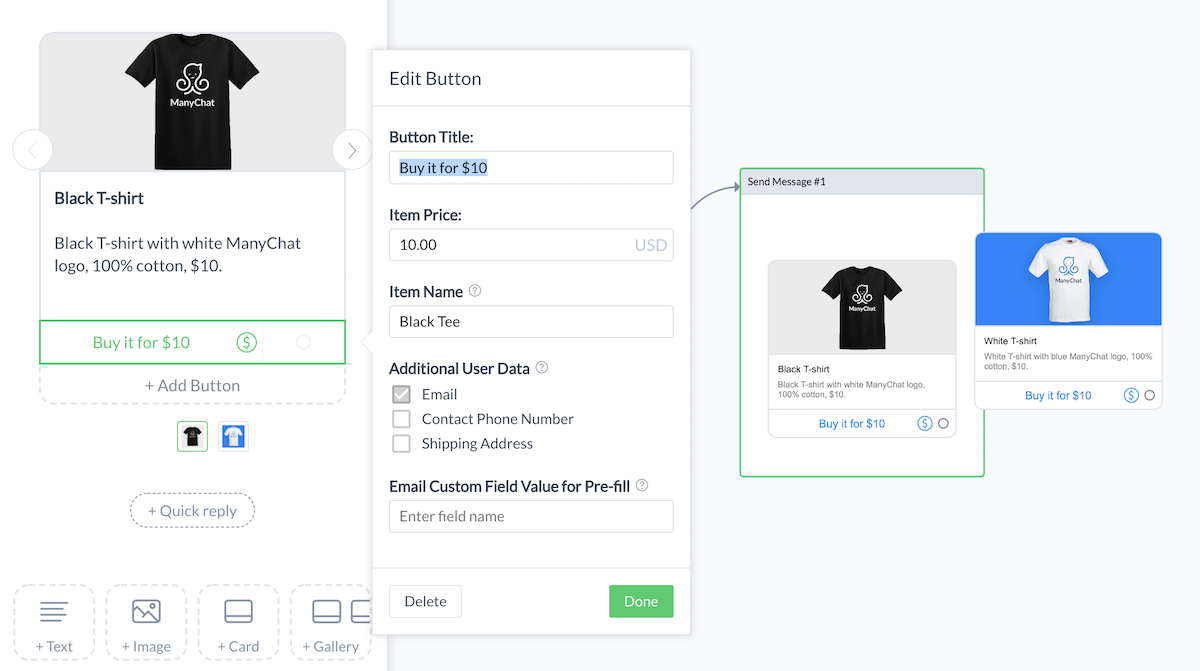
- Translations
AI-based translation software, such as DeepL and Google Translate (indeed Google Translate - thanks to artificial intelligence, it has made significant advancements), are extremely efficient in fast and accurate translations. Moreover, with a well-formulated prompt, ChatGPT can also deliver perfect translation results. Although they may not be flawless in every language, AI continues to improve, offering increasingly higher quality translations.
Why should you integrate artificial intelligence into administration?
- Time-saving: Automated systems can process large volumes of data and simplify administrative work, allowing you to focus more time on important tasks.
- Accurate and fast execution: AI can help minimize errors while performing tasks quickly and efficiently.
- Cost reduction: Automation reduces the need for additional workforce, as AI can handle repetitive tasks previously done by humans.
What do you lose if you skip using artificial intelligence?
- Time loss: The absence of AI requires spending more time on manual work, slowing down workflows.
- Higher costs: Without automated tools, you will need more employees to carry out tasks, increasing operational costs.
- Errors and inaccuracies: Human errors are common in manual administrative tasks, whereas AI ensures accuracy and reliability.
Let’s see it in practice!
If you want to build a prompt for translation, it’s crucial to clearly and explicitly define the source and target language, while taking context and possible stylistic preferences into account.
Here is an example of how to construct a well-crafted translation prompt step-by-step.
1. Define the source and target language:
- Source text: [Insert actual text here]
- Source language: [e.g., Hungarian]
- Target language: [e.g., English]
2. Request context or explanation if needed:
If the text contains technical terms, idiomatic phrases, or culturally specific elements, it’s advisable to request inclusion of these in the translation.
- Example: "Please ensure technical terms are translated accurately."
3. Break down into smaller units if the text is long or complex:
If the source text is long or complex, breaking it into smaller sections can make translation easier and more manageable.
4. Provide instructions for style and tone:
If there is a desired style to maintain in the translation (e.g., formal, friendly, business-like), mention it.
- Example: "The translation should have a formal and professional tone."
5. Request quality performance:
Emphasize the requirement for the translation to be accurate and natural rather than literal or overly mechanical.
- Example: "The translation should read naturally, as if written by a native speaker."
Now is the opportunity to try translation in practice! Apply the guidelines outlined in the guide and create a natural, accurate translation that considers the text’s context and style.
How to use AI in your marketing?
AI is gaining an increasingly important role in the marketing world by assisting with market research, brainstorming, email marketing, campaign planning, and even defining the brand's voice. Due to the complexity of marketing processes, AI can ease all stages, from strategic planning to daily content production.
Now let’s look at three examples of how you can use AI in your marketing and how it can help optimize various specialties.
1. Defining the brand's voice
The brand's voice is crucial for communication, as all manifestations of your business (texts, adverts, social media posts) are based on this voice. AI, particularly ChatGPT and other language models, can easily help define your brand’s voice. During this process, you provide the AI with detailed brand information, such as:
- Target audience: Who are the intended users of the product or service? What characterizes them? What problems do we aim to solve for them?
- Company values and mission: What is the brand's mission? What values do we represent?
- Communication style: How do we want our target audience to perceive our brand? Should it be friendly, formal, expert, or humorous?
Once these details are shared, ChatGPT can assist in precisely articulating the brand's voice, aiding the unification of all marketing communications. AI thus simplifies brand strategy development and unifies communication.
+Example:
“[Company Name] content generation template:
- Content Type: [Define the type of content, e.g., blog post, social media post, product description, newsletter, etc.]
- Target Audience: [Describe as specifically as possible the primary target audience for the content]
- Main Topic/Theme: [Specify the central topic or theme of the content]
- Key Points: [List 3-5 major points or ideas the content must address]
- Brand Voice Guidelines:
- Tone: [e.g., professional, friendly, authoritative, direct, youthful, etc.]
- Language Style: [e.g., formal, conversational, technical, simple, creative]
- Personality Traits: [List 2-3 key personality traits reflecting the brand, e.g., innovative, reliable, playful]
- Key Brand Messages: [List 1-3 core brand messages or values to underscore]
- Call to Action: [Define the desired action the audience should take after consuming the content. E.g., purchase]
- Keywords/Phrases to Include: [List specific keywords or phrases to embed]
- Content Length: [Specify the desired word count or character limit]
- Unique Value Proposition: [Briefly state what distinguishes your company from competitors]
- Dos and Don'ts:
- Dos: [List 2-3 elements to always include or emphasize]
- Don'ts: [List 2-3 elements to avoid]
- Examples: [Provide links or references to previous content exemplifying the desired style and tone]
Please use this template to create [Content Type] that aligns with our
brand voice and effectively communicates our message to the target audience!”

2. Campaign Planning and Ideation
AI becomes a key tool in campaign planning as well. During planning, it is crucial to clearly define the goal you want to achieve (e.g., increasing brand awareness, boosting sales), and AI helps develop creative ideas suited to this goal.
Let’s consider a sample prompt on how to approach campaign planning. The following command offers an excellent starting point but can be further detailed with additional instructions.
Example:
“You are an experienced marketing expert specializing in the [market]. Plan a 2-week social media campaign for launching a [product]. The target audience is [target audience characteristics]. The campaign should cover [Facebook, Instagram, and LinkedIn] platforms. Define the main messages, post types (e.g., image, video, story), posting frequency. Write hashtags too. Suggest interactive content elements (e.g., contests, questions) to engage followers. Provide ideas for influencer collaborations and paid ads.”
3. Strategy Planning, Buyer Persona Definition, and Market Research
Marketing strategy planning is an essential part of successful campaign development, and AI provides effective support in this area as well. Defining buyer personas or detailed target audience profiles is crucial for reaching them with personalized, effective marketing communication.
● Buyer Persona Definition: With ChatGPT, you can create detailed buyer personas considering demographic data, interests, buying habits, and problems, ensuring that each campaign truly speaks to the right audience.
● Market Research: AI can rapidly and accurately conduct market research and analysis of competitors, helping us remain informed about market conditions. ChatGPT and Google Trends can discover trends, keywords, and popular topics to aid in precise and effective campaign planning.
● Strategic Planning: AI enables rapid adjustment of our marketing strategy based on the latest trends and market changes. Jasper.ai, for instance, can help pre-determine the best content forms and tools, and also optimize campaign timing based on regular data analysis.
Now It’s Your Turn: Downloadable ChatGPT Prompt Collection for Entrepreneurs
Congratulations on reaching this point, full of valuable insights on using artificial intelligence to enhance your business. Now you've arrived at the next step, helping you truly harness the potential of ChatGPT and other AI tools.
We've compiled a variety of useful ChatGPT prompts specifically designed for entrepreneurs. These prompts can simplify daily tasks, support creative idea generation, assist in developing your marketing strategy, or even fine-tune communication with customers.
Why is the ChatGPT Prompt Collection Valuable?
- Easy to Apply: Prompts can be used directly or customized to meet your business needs.
- Saves Time: Automate content production, customer service, or even prepare marketing campaigns.
- Assists Creative Processes: Quickly generate ideas, write campaign texts, slogans, or blog posts.
- Strategic Advantage: AI enables more efficient market entry, development of buyer personas, and optimization of marketing campaigns.
By downloading the collection, you gain a tool that helps elevate your business to the next level. Download now and leverage all the advantages AI offers for success!





